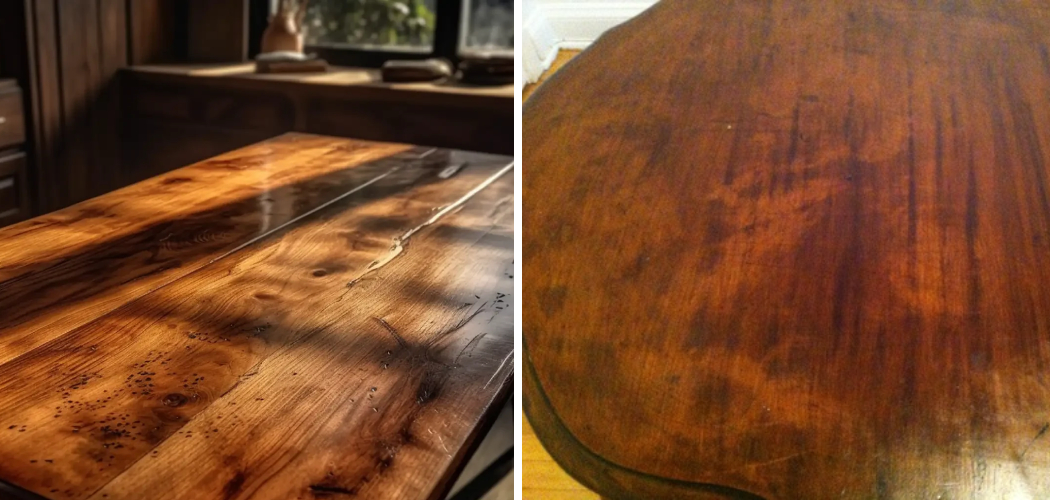Do you have a wood project that’s been ruined by an uneven stain job? If you’re a DIY enthusiast and love working with wood, then learning how to fix uneven stains is key to producing the best results.
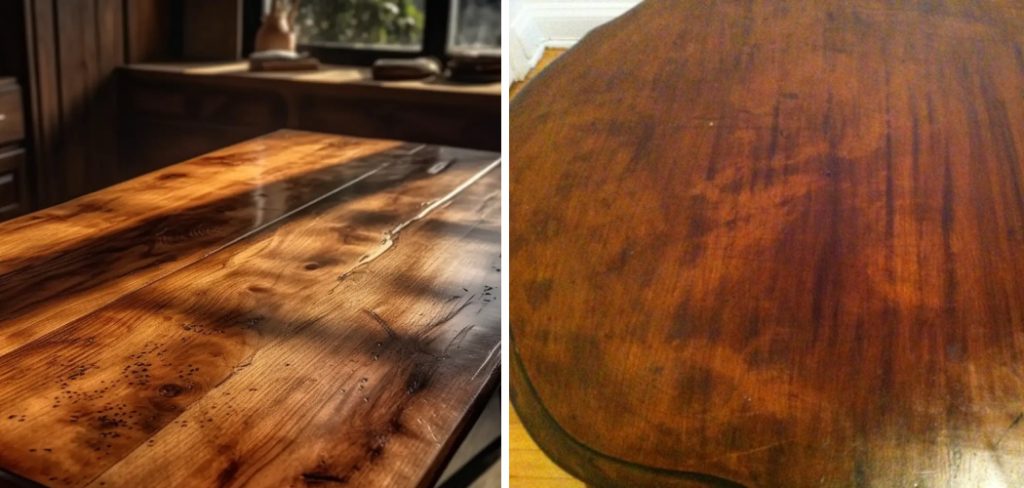
Wood stains can be tricky to work with–if it’s too thick, it won’t sink into the wood grain as much; if it’s too thin, there will be variations in coloration across the surface. But don’t give up hope yet – with a few simple steps, it is possible to fix the imperfection and salvage your project!
Fortunately, you don’t have to live with an uneven finish–there are several techniques that allow you to tweak your stain job so that your project looks perfect. In this blog post, we’ll explore multiple solutions on how to fix uneven stain on wood quickly and easily! Keep reading to discover all of our best tricks and tips for fixing those pesky stains!
Why May You Have Uneven Stain on Wood?
1. Incorrect Application
The most common reason for the uneven stain on the wood is that the stain wasn’t applied correctly. It can be easy to miss spots when you’re staining a large surface, or it might have been applied too quickly or too thickly. Additionally, the type of wood you’re working with will influence how your stain looks; some types absorb more or less of the stain than others.
2. Poor Preparation
Another potential culprit for uneven stains is inadequate preparation before you begin staining. If your wood isn’t properly sanded and cleaned beforehand, it can result in an uneven finish when you apply the stain–even if you use the correct application techniques. Make sure to thoroughly sand your project, remove any dust or debris, and clean the surface before you start staining.
Required Items
Before you begin troubleshooting your uneven stain, make sure you have all the necessary items on hand:
- Sandpaper
- Rag(s)
- Wood cleaner or degreaser (if needed)
- Stain of choice
Once you’ve collected these items, you’ll be ready to jump into the repair process.
10 Ways How to Fix Uneven Stain on Wood
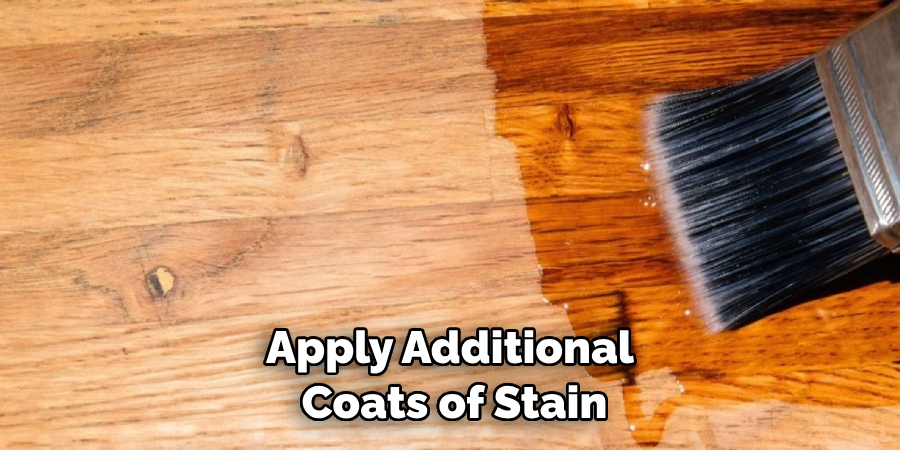
1. Additional Coats of Stain
If your stain has been applied too thinly in some areas, the best solution is to apply additional coats of stain. This will allow the stained area to catch up with the lighter areas on the surface, ensuring an even finish.
Start by sanding away any drips or brush strokes from the previous coat, then apply a thin layer of stain using a rag or brush. Allow it to sit for several minutes before wiping off the excess and repeating until you’ve achieved your desired shade.
2. Sand Away Uneven Areas
If you don’t want to add more stain, you can also try sanding away the uneven areas. Use a low-grit sandpaper–around 180 or 220 grit–to lightly abrade the surface. This will help remove any excess stain and smooth out any variations in color. Be sure to wipe off dust residue with a damp cloth before re-staining the surface.
3. Use a Sealant
If you’re looking for a quick fix, consider using a clear sealant to even out your stain job. Apply the sealant with a brush or rag to help disguise any variations in coloration–it won’t completely remove them, but it will help to blend them together for a more uniform finish.
4. Mix Stains
If you’re dealing with patches of very different shades, you can try mixing stains to better match the lighter areas. Start by testing out small amounts of scrap wood until you find the perfect shade, then apply as needed to even out your finish. Mixing stains can be a great way to create unique and interesting color combinations, too.
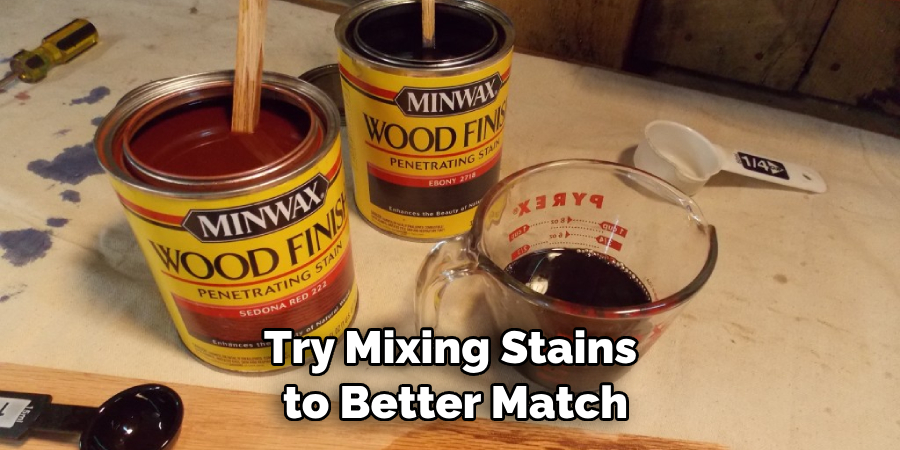
5. Adjust the Sheen
The sheen of your stain can also make a big difference in how even it looks. Too much gloss can emphasize any differences in color, while low-luster finishes can help to hide them. If you’re having trouble with an uneven finish, try adjusting the sheen by switching to a matte or satin finish.
6. Strip and Re-stain
If all else fails, you may need to strip and completely re-stain the surface. Use a wood stripper or cleaner to remove the old stain, then thoroughly sand before applying a new coat of your chosen stain. Just make sure you’re using the correct application techniques and paying close attention to your results–this will help ensure a more even finish.
7. Use a Tinted Polyurethane
If you’re looking for a durable finish that can also help to even out your stain job, try using a tinted polyurethane. These products come in various shades so you can easily match the existing color of your wood. Apply a thin coat with a brush or rag, then wipe off the excess and let it dry.
8. Add Darker Pigment to the Stain
If you’re dealing with areas that are too light, try adding some darker pigment to the stain to even out the coloration. Start by testing this technique on scrap wood to make sure you’ll achieve the desired results, then add a small amount of pigment to your stain and mix thoroughly.
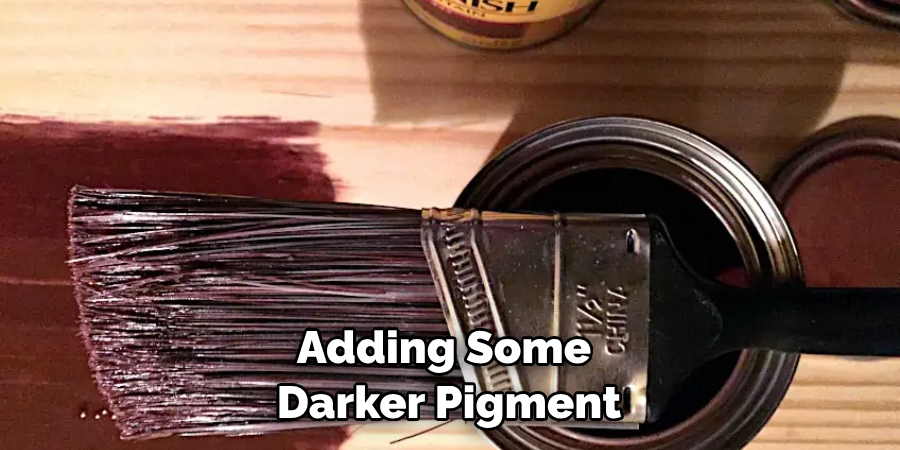
9. Burnish the Surface
Burnishing is a technique used to impart an even finish on wood surfaces. To do this, use either a metal burnishing tool or a soft cloth to rub the surface in circular motions. This will help to blend any differences in coloration and create a more uniform finish.
10. Use a Wood Dye
Finally, if the stain you’ve used isn’t providing the desired results, you can always try using a wood dye instead. Unlike stains, wood dyes are absorbed directly into the grain of the wood, which can help provide a more even finish. Simply mix your chosen dye according to the instructions provided, then apply it to the wood and allow it to dry before sealing with a polyurethane or wax.
8 Common Mistakes to Avoid
If you are planning to fix the uneven stain on your wood, make sure that you avoid some of the most common mistakes.
- Not sanding is a big mistake. Before applying any sort of product or piece of finishing material, it is important to always remember to sand the surface first. Sanding is essential in order for the product or finish to adhere properly.
- Avoid not cleaning the surface properly before applying stain or finish. Dirt and debris can prevent a smooth application of the product, resulting in an uneven stain. Be sure to take the time to clean the wood first with a damp cloth or broom prior to staining it.
- Applying too much or too little stain is another mistake that can be made. It is important to apply an even amount of stain, allowing it to soak in and spread evenly across the surface.
- Not removing excess stains or finish is also a mistake. After you have applied the product, you should take the time to wipe away any excess before it has a chance to dry on the wood’s surface.
- Matching old and new wood can be tricky. If you are fixing a stain on older wood, it is important to try and match the color as closely as possible to the existing shade.
- Only using one type of product or finish is a mistake that many people make when dealing with contradicting woods. Different types of wood may require different finishes in order to achieve an even stain.
- Using a brush or rag instead of a pad can also lead to an uneven stain. Pads are the best way to evenly soak up and spread the product across the wood’s surface. Keep in mind that this same technique applies to the application of sealant or finish best way to evenly soak up and spread the product across the wood’s surface.
- Not allowing enough time for drying is another common mistake that can easily be avoided. It is important to allow adequate time after applying the stain or finish before attempting any further cleaning. This allows the product to settle into the wood’s surface and dry properly.
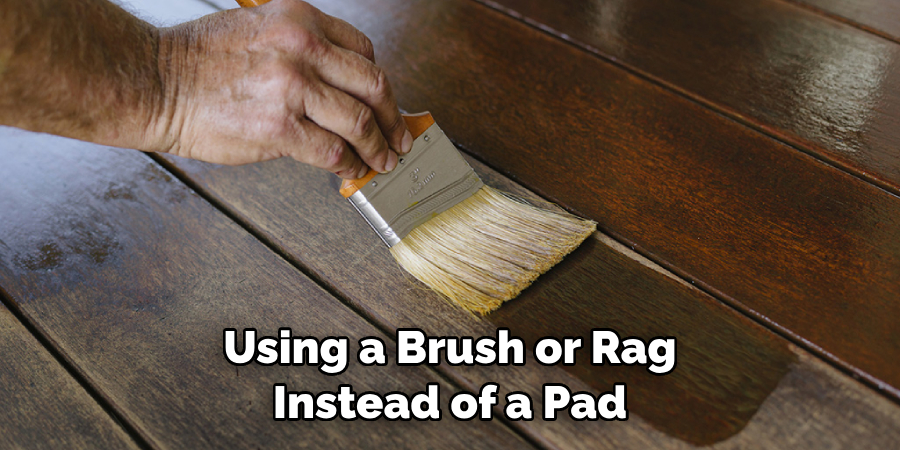
Following these simple steps will help you to achieve a beautiful, even stain on your wood surfaces. Don’t forget that preparation is key for any project and it is important to take the time to do it correctly in order to avoid making costly mistakes. With careful attention to detail and a bit of patience, you can easily fix an uneven stain on your wood surfaces.
Conclusion
With a little extra time and care, anyone can fix the uneven stain situation on their wood surfaces. All it takes is more patience, a bit of sanding, and time spent winding up the perfect combination of stain and sealants for optimal results.
This will ensure that your wood is looking better than ever before in no time at all. To top it off, make sure you’re keeping your tools clean throughout the process to avoid any over spraying or other potential messes.
After all this hard work your floors or furniture should look beautiful and refreshed. If you find yourself struggling, there are always experts out there who can help if necessary.
Hopefully, this guide has given you an outline of how to fix your uneven or patchy-looking stain issue in no time so that you can enjoy your wooden surfaces again! Follow the steps on how to fix uneven stain on wood outlined above, and you should be well on your way to wood surfaces that look as good as new.

